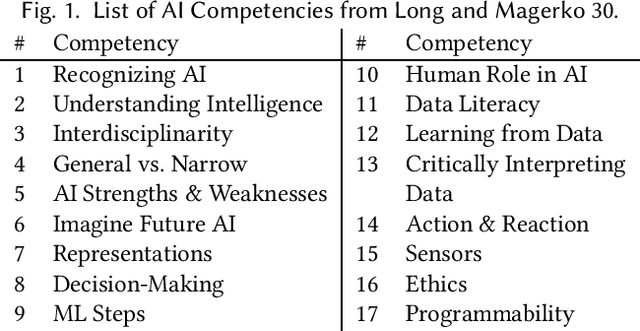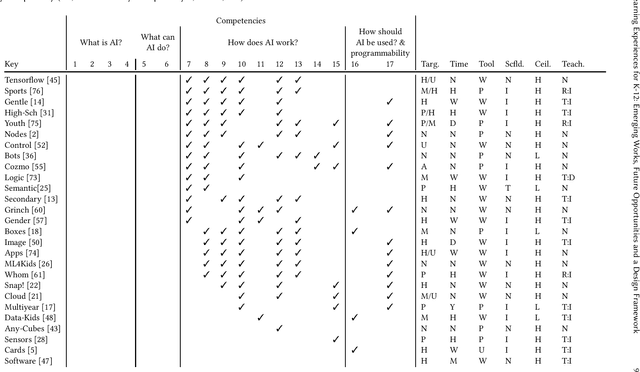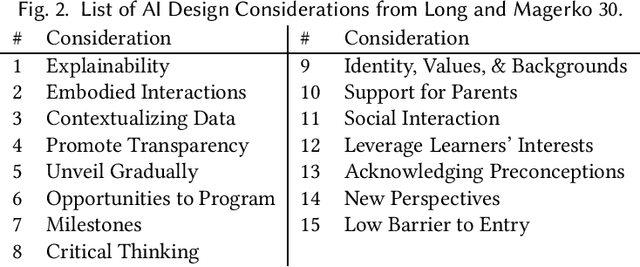Xiaofei Zhou
Jailbreak Large Vision-Language Models Through Multi-Modal Linkage
Dec 03, 2024Abstract:With the significant advancement of Large Vision-Language Models (VLMs), concerns about their potential misuse and abuse have grown rapidly. Previous studies have highlighted VLMs' vulnerability to jailbreak attacks, where carefully crafted inputs can lead the model to produce content that violates ethical and legal standards. However, existing methods struggle against state-of-the-art VLMs like GPT-4o, due to the over-exposure of harmful content and lack of stealthy malicious guidance. In this work, we propose a novel jailbreak attack framework: Multi-Modal Linkage (MML) Attack. Drawing inspiration from cryptography, MML utilizes an encryption-decryption process across text and image modalities to mitigate over-exposure of malicious information. To align the model's output with malicious intent covertly, MML employs a technique called "evil alignment", framing the attack within a video game production scenario. Comprehensive experiments demonstrate MML's effectiveness. Specifically, MML jailbreaks GPT-4o with attack success rates of 97.80% on SafeBench, 98.81% on MM-SafeBench and 99.07% on HADES-Dataset. Our code is available at https://github.com/wangyu-ovo/MML
MINet: Multi-scale Interactive Network for Real-time Salient Object Detection of Strip Steel Surface Defects
May 25, 2024Abstract:The automated surface defect detection is a fundamental task in industrial production, and the existing saliencybased works overcome the challenging scenes and give promising detection results. However, the cutting-edge efforts often suffer from large parameter size, heavy computational cost, and slow inference speed, which heavily limits the practical applications. To this end, we devise a multi-scale interactive (MI) module, which employs depthwise convolution (DWConv) and pointwise convolution (PWConv) to independently extract and interactively fuse features of different scales, respectively. Particularly, the MI module can provide satisfactory characterization for defect regions with fewer parameters. Embarking on this module, we propose a lightweight Multi-scale Interactive Network (MINet) to conduct real-time salient object detection of strip steel surface defects. Comprehensive experimental results on SD-Saliency-900 dataset, which contains three kinds of strip steel surface defect detection images (i.e., inclusion, patches, and scratches), demonstrate that the proposed MINet presents comparable detection accuracy with the state-of-the-art methods while running at a GPU speed of 721FPS and a CPU speed of 6.3FPS for 368*368 images with only 0.28M parameters. The code is available at https://github.com/Kunye-Shen/MINet.
Quality-aware Selective Fusion Network for V-D-T Salient Object Detection
May 13, 2024Abstract:Depth images and thermal images contain the spatial geometry information and surface temperature information, which can act as complementary information for the RGB modality. However, the quality of the depth and thermal images is often unreliable in some challenging scenarios, which will result in the performance degradation of the two-modal based salient object detection (SOD). Meanwhile, some researchers pay attention to the triple-modal SOD task, where they attempt to explore the complementarity of the RGB image, the depth image, and the thermal image. However, existing triple-modal SOD methods fail to perceive the quality of depth maps and thermal images, which leads to performance degradation when dealing with scenes with low-quality depth and thermal images. Therefore, we propose a quality-aware selective fusion network (QSF-Net) to conduct VDT salient object detection, which contains three subnets including the initial feature extraction subnet, the quality-aware region selection subnet, and the region-guided selective fusion subnet. Firstly, except for extracting features, the initial feature extraction subnet can generate a preliminary prediction map from each modality via a shrinkage pyramid architecture. Then, we design the weakly-supervised quality-aware region selection subnet to generate the quality-aware maps. Concretely, we first find the high-quality and low-quality regions by using the preliminary predictions, which further constitute the pseudo label that can be used to train this subnet. Finally, the region-guided selective fusion subnet purifies the initial features under the guidance of the quality-aware maps, and then fuses the triple-modal features and refines the edge details of prediction maps through the intra-modality and inter-modality attention (IIA) module and the edge refinement (ER) module, respectively. Extensive experiments are performed on VDT-2048
Frequency Perception Network for Camouflaged Object Detection
Aug 17, 2023Abstract:Camouflaged object detection (COD) aims to accurately detect objects hidden in the surrounding environment. However, the existing COD methods mainly locate camouflaged objects in the RGB domain, their performance has not been fully exploited in many challenging scenarios. Considering that the features of the camouflaged object and the background are more discriminative in the frequency domain, we propose a novel learnable and separable frequency perception mechanism driven by the semantic hierarchy in the frequency domain. Our entire network adopts a two-stage model, including a frequency-guided coarse localization stage and a detail-preserving fine localization stage. With the multi-level features extracted by the backbone, we design a flexible frequency perception module based on octave convolution for coarse positioning. Then, we design the correction fusion module to step-by-step integrate the high-level features through the prior-guided correction and cross-layer feature channel association, and finally combine them with the shallow features to achieve the detailed correction of the camouflaged objects. Compared with the currently existing models, our proposed method achieves competitive performance in three popular benchmark datasets both qualitatively and quantitatively.
Unifying Graph Contrastive Learning with Flexible Contextual Scopes
Oct 17, 2022



Abstract:Graph contrastive learning (GCL) has recently emerged as an effective learning paradigm to alleviate the reliance on labelling information for graph representation learning. The core of GCL is to maximise the mutual information between the representation of a node and its contextual representation (i.e., the corresponding instance with similar semantic information) summarised from the contextual scope (e.g., the whole graph or 1-hop neighbourhood). This scheme distils valuable self-supervision signals for GCL training. However, existing GCL methods still suffer from limitations, such as the incapacity or inconvenience in choosing a suitable contextual scope for different datasets and building biased contrastiveness. To address aforementioned problems, we present a simple self-supervised learning method termed Unifying Graph Contrastive Learning with Flexible Contextual Scopes (UGCL for short). Our algorithm builds flexible contextual representations with tunable contextual scopes by controlling the power of an adjacency matrix. Additionally, our method ensures contrastiveness is built within connected components to reduce the bias of contextual representations. Based on representations from both local and contextual scopes, UGCL optimises a very simple contrastive loss function for graph representation learning. Essentially, the architecture of UGCL can be considered as a general framework to unify existing GCL methods. We have conducted intensive experiments and achieved new state-of-the-art performance in six out of eight benchmark datasets compared with self-supervised graph representation learning baselines. Our code has been open-sourced.
Exploring Explicit and Implicit Visual Relationships for Image Captioning
May 06, 2021



Abstract:Image captioning is one of the most challenging tasks in AI, which aims to automatically generate textual sentences for an image. Recent methods for image captioning follow encoder-decoder framework that transforms the sequence of salient regions in an image into natural language descriptions. However, these models usually lack the comprehensive understanding of the contextual interactions reflected on various visual relationships between objects. In this paper, we explore explicit and implicit visual relationships to enrich region-level representations for image captioning. Explicitly, we build semantic graph over object pairs and exploit gated graph convolutional networks (Gated GCN) to selectively aggregate local neighbors' information. Implicitly, we draw global interactions among the detected objects through region-based bidirectional encoder representations from transformers (Region BERT) without extra relational annotations. To evaluate the effectiveness and superiority of our proposed method, we conduct extensive experiments on Microsoft COCO benchmark and achieve remarkable improvements compared with strong baselines.
Image Captioning with Context-Aware Auxiliary Guidance
Jan 04, 2021



Abstract:Image captioning is a challenging computer vision task, which aims to generate a natural language description of an image. Most recent researches follow the encoder-decoder framework which depends heavily on the previous generated words for the current prediction. Such methods can not effectively take advantage of the future predicted information to learn complete semantics. In this paper, we propose Context-Aware Auxiliary Guidance (CAAG) mechanism that can guide the captioning model to perceive global contexts. Upon the captioning model, CAAG performs semantic attention that selectively concentrates on useful information of the global predictions to reproduce the current generation. To validate the adaptability of the method, we apply CAAG to three popular captioners and our proposal achieves competitive performance on the challenging Microsoft COCO image captioning benchmark, e.g. 132.2 CIDEr-D score on Karpathy split and 130.7 CIDEr-D (c40) score on official online evaluation server.
Designing AI Learning Experiences for K-12: Emerging Works, Future Opportunities and a Design Framework
Sep 22, 2020



Abstract:Artificial intelligence (AI) literacy is a rapidly growing research area and a critical addition to K-12 education. However, support for designing tools and curriculum to teach K-12 AI literacy is still limited. There is a need for additional interdisciplinary human-computer interaction and education research investigating (1) how general AI literacy is currently implemented in learning experiences and (2) what additional guidelines are required to teach AI literacy in specifically K-12 learning contexts. In this paper, we analyze a collection of K-12 AI and education literature to show how core competencies of AI literacy are applied successfully and organize them into an educator-friendly chart to enable educators to efficiently find appropriate resources for their classrooms. We also identify future opportunities and K-12 specific design guidelines, which we synthesized into a conceptual framework to support researchers, designers, and educators in creating K-12 AI learning experiences.
Improving Abstractive Text Summarization with History Aggregation
Dec 24, 2019



Abstract:Recent neural sequence to sequence models have provided feasible solutions for abstractive summarization. However, such models are still hard to tackle long text dependency in the summarization task. A high-quality summarization system usually depends on strong encoder which can refine important information from long input texts so that the decoder can generate salient summaries from the encoder's memory. In this paper, we propose an aggregation mechanism based on the Transformer model to address the challenge of long text representation. Our model can review history information to make encoder hold more memory capacity. Empirically, we apply our aggregation mechanism to the Transformer model and experiment on CNN/DailyMail dataset to achieve higher quality summaries compared to several strong baseline models on the ROUGE metrics.
 Add to Chrome
Add to Chrome Add to Firefox
Add to Firefox Add to Edge
Add to Edge